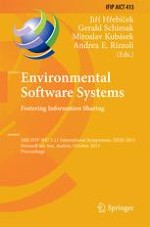This book constitutes the refereed proceedings of the 10th IFIP WG 5.11 International Symposium on Environmental Software Systems, ISESS 2013, held in Neusiedl am See, Austria, in June 2013. The 65 revised full papers presented were carefully reviewed and selected from numerous submissions. The papers are organized in the following topical sections: environmental application in the scope of the future Internet; smart and mobile devices used for environmental applications; information tools for global environmental assessment; environmental applications in risk and crises management; SEIS as a part of the 7th environment action programme of EU; human interaction and human factors driving future EIS/EDSS developments; environmental management/-accounting and -statistics; and information systems and applications.
